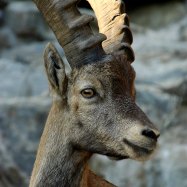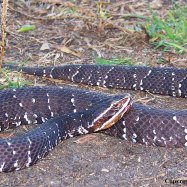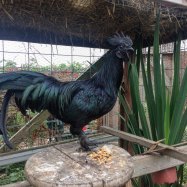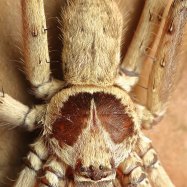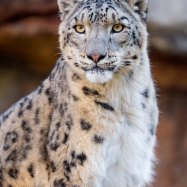
Basenji Dog
Female: 16-17 inches; Male: 17-18 inches
. Basenji dogs are ancient African breeds known for their energetic and independent nature. The average length for females is 16-17 inches, while males are 17-18 inches. They belong to the Canidae family and have a medium-sized, muscular, and compact body. These playful and loyal companions are a popular choice for active families who can provide them with plenty of exercise. Originating from Sub-Saharan Africa, Basenjis are often referred to as the barkless dogs due to their unique vocalization method. They make great pets for those looking for a spirited and adventurous four-legged friend.
Animal Details Summary:
Common Name: Basenji Dog
Kingdom: Animalia
Habitat: Terrestrial
The Basenji Dog: A Fascinating Breed from Africa
Dog lovers all around the world are constantly on the lookout for unique and interesting breeds to add to their families. While most of us are familiar with popular dog breeds such as the Labrador Retriever or the Golden Retriever, there are some lesser-known breeds that are just as fascinating and lovable. One such breed is the Basenji Dog.The Basenji Dog, scientifically known as Canis familiaris, is a medium-sized, muscular, and compact breed that hails from the African continent Basenji Dog. They are often referred to as "barkless dogs" due to their unique vocalizations, or lack thereof. In this article, we will take a closer look at this captivating breed and discover its origins, physical characteristics, and personality traits.
Origins:
The Basenji Dog is believed to have originated in the Democratic Republic of the Congo, where they were bred for hunting and tracking small game in the dense forests of Central Africa. They were specifically used by the local tribes for hunting small animals such as rabbits, birds, and even small antelopes. The breed was then brought to Europe in the 19th century by British explorers who were fascinated by this unique and resilient breed.Physical Characteristics:
The Basenji Dog has a lean and athletic build with a medium-sized frame. They have a distinctively upright stance, and their legs are slightly longer than their bodies. This gives them the appearance of being on their toes, ready to pounce at any moment. They have a short, smooth coat that comes in a wide variety of colors, including black, brindle, red, and tri-color Bullfrog. Their eyes are almond-shaped and can range from hazel to dark brown in color.One of the most distinct features of the Basenji Dog is its ears, which are small and pointed, giving them a curious and alert expression. They also have a tightly curled tail that rests on their back, making them look more like a wild animal than a domestic dog. This unique combination of physical features gives them a regal and exotic appearance that is sure to turn heads.
Personality Traits:
The Basenji Dog is known for its lively and energetic personality. They are intelligent, independent, and have a strong hunting instinct, making them natural-born hunters. Due to their hunting background, they have a high prey drive and may not get along well with other small pets such as cats. However, with proper training and socialization, they can coexist with other animals.Despite their small size, Basenjis are known for their confidence and assertiveness. They are not afraid to speak their mind and will often express their opinions through their vocalizations. While they are not known for barking, they make a range of unique sounds, including a yodel-like howl, a chortling sound, and a sound similar to a whine. These vocalizations are used to communicate and can indicate different emotions such as excitement, frustration, or contentment.
Training and Care:
Basenji Dogs are highly intelligent and have a strong desire to please their owners, making them relatively easy to train. However, due to their independent nature, they may display stubbornness and require consistent training and positive reinforcement techniques. As with any breed, early socialization is crucial to ensure that they grow up to be well-adjusted and well-behaved dogs.They also have high energy levels and require a significant amount of daily exercise to prevent destructive behaviors. A long walk or a good run in a secure area is essential for keeping them mentally and physically stimulated. Without proper exercise, they can become bored and may engage in destructive behaviors such as excessive chewing or digging.
Their short coat requires minimal grooming with occasional brushing to remove any loose hair. They also tend to keep themselves clean, so baths are only necessary when they get dirty. However, it is important to regularly check their ears for any debris or infections and to trim their nails to prevent overgrowth and discomfort.
Conclusion:
In conclusion, the Basenji Dog is a unique and spirited breed that has captured the hearts of dog lovers all over the world. Their origins and physical characteristics make them an interesting and exotic addition to any family. With proper care and training, they can make excellent companions and guard dogs. So if you are looking for a one-of-a-kind breed with a rich history and a lively personality, the Basenji Dog might just be the perfect fit for you.

Basenji Dog
Animal Details Basenji Dog - Scientific Name: Canis familiaris
- Category: Animals B
- Scientific Name: Canis familiaris
- Common Name: Basenji Dog
- Kingdom: Animalia
- Phylum: Chordata
- Class: Mammalia
- Order: Carnivora
- Family: Canidae
- Habitat: Terrestrial
- Feeding Method: Carnivorous
- Geographical Distribution: Africa
- Country of Origin: Democratic Republic of the Congo
- Location: Sub-Saharan Africa
- Animal Coloration: Variety of colors including black, brindle, red, and tri-color
- Body Shape: Medium-sized, muscular, and compact
- Length: Female: 16-17 inches; Male: 17-18 inches

Basenji Dog
- Adult Size: Height: 16-17 inches; Weight: 22-24 pounds
- Average Lifespan: 12-14 years
- Reproduction: Sexual
- Reproductive Behavior: Seasonal breeding
- Sound or Call: Makes unique yodel-like vocalizations called "baroos"
- Migration Pattern: Non-migratory
- Social Groups: Pack
- Behavior: Curious, intelligent, independent, and energetic
- Threats: No major threats
- Conservation Status: Least Concern
- Impact on Ecosystem: No significant impact
- Human Use: Companion dogs
- Distinctive Features: Wrinkled forehead, tightly curled tail, and perky ears
- Interesting Facts: Basenjis are known as the "barkless dogs" as they produce low levels of barking sounds
- Predator: No natural predators
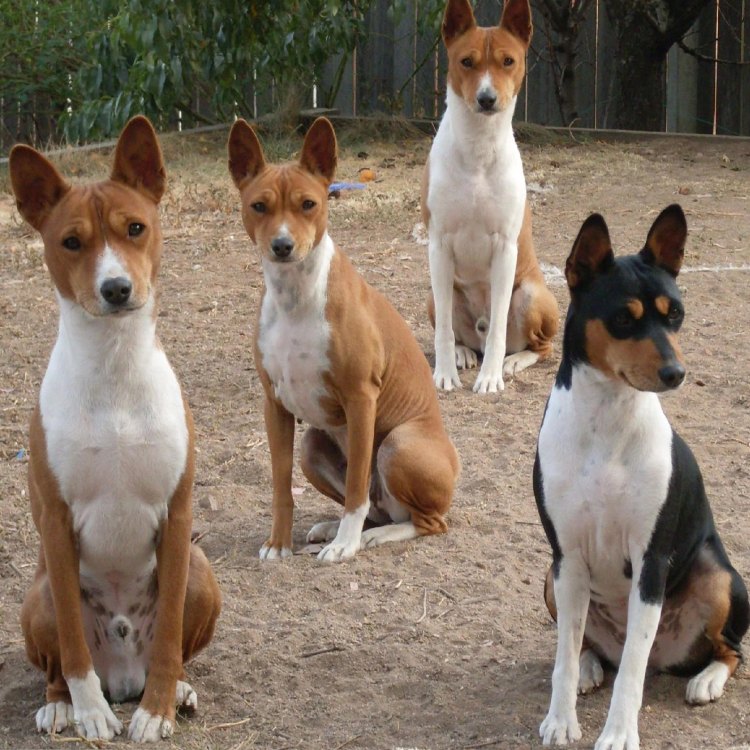
Canis familiaris
The Unique and Fascinating Basenji Dog: The "Barkless" Canine Companion
When you think of a typical dog, what comes to mind? Barking, tail-wagging, and energetic canines may be the first things you think of. However, there is a unique breed of dog that challenges these common stereotypes - the Basenji.With its distinctive features, interesting behaviors, and rich history, the Basenji is a dog worth learning about. In this article, we will delve into the world of Basenji dogs, exploring everything from their physical attributes to their impact on the ecosystem PeaceOfAnimals.Com. So, let's jump right in and discover what makes Basenjis so captivating and special.
- The Adult Size and Average Lifespan of Basenjis -
First and foremost, let's talk about the physical characteristics of the Basenji. This breed typically grows to be around 16-17 inches in height and weighs between 22-24 pounds, making them medium-sized dogs.
Their lifespan averages between 12-14 years, which is longer than most dogs of similar size. This could be due to their natural athleticism and healthy breed genetics.
- Reproductive Behavior and Seasonal Breeding -
Basenjis reproduce through sexual means, just like most other animals. However, their reproductive behavior is quite different from other dog breeds. Basenjis have a seasonal breeding pattern, unlike many other domesticated breeds that can reproduce all year round.
During this time, female Basenjis may experience changes in their behavior and physical appearance Booby. They may become increasingly vocal and display more sexual behavior. Male Basenjis may also become more territorial and aggressive during the breeding season.
- Unique Yodel-Like Vocalizations -
While most dogs are known for their barking, Basenjis have gained the nickname "barkless dogs" due to their low levels of barking sounds. So, how do Basenjis communicate?
Instead of barking, Basenjis make unique yodel-like vocalizations known as "baroos." These sounds are a mix of a howl and a yodel and are used to express a variety of emotions, from happiness to frustration. This distinctive vocalization makes Basenjis stand out among other dogs.
- Non-Migratory and Pack-Based Social Groups -
Basenjis are non-migratory, meaning they do not migrate to different locations throughout the year. They are a pack-based species, and in the wild, they would typically live in groups of three to four dogs.
Even though they are now domesticated, Basenjis still have these pack instincts and often bond closely with their human families. This social behavior makes them excellent companion dogs and family pets.
- Curiosity, Intelligence, and Independence -
Basenjis are known for their curious, intelligent, and independent nature. This breed is constantly exploring its surroundings, making them a perfect fit for active owners who enjoy outdoor adventures.
Their intelligence makes them quick learners, but their independent nature can make training a challenge. However, with the right motivation and positive reinforcement, Basenjis can excel in obedience and agility training.
- No Major Threats and Least Concern Conservation Status -
In terms of threats, Basenjis have no major predators or natural threats. They are a robust and resilient breed with no significant health concerns. However, as with any dog, proper care and regular veterinary check-ups are essential for maintaining their overall well-being.
Basenjis also have a conservation status of "Least Concern" according to the International Union for Conservation of Nature (IUCN). This means that they are not in danger of extinction and can be found in healthy numbers in their natural habitat.
- No Significant Impact on the Ecosystem -
Basenjis are natural hunters, but their hunting abilities have not had a significant impact on the ecosystem. Unlike some dog breeds that were developed for hunting, Basenjis do not possess any physical characteristics that would give them an advantage over other animals.
Additionally, since they are non-migratory, they do not put any additional pressure on the ecosystem by traveling to different regions.
- Human Use as Companion Dogs -
As mentioned earlier, Basenjis are excellent companion dogs and make loving, loyal pets. They are highly adaptable and do well in different environments, from small apartments to larger homes with yards.
Basenjis are also great with children when socialized properly and can be an active playmate for kids. However, due to their independent nature, they may not be the best choice for first-time dog owners.
- The Distinctive Features of Basenjis -
Basenjis have several distinctive features that make them stand out among other dog breeds. Their most notable features include a wrinkled forehead, tightly curled tail, and perky, upright ears.
The wrinkles on a Basenji's forehead give them a unique and expressive look, making it easy to read and understand their thoughts and emotions. Their tightly curled tail is a trademark feature and is a defining characteristic of the breed.
Their perky, upright ears also add to their alert and curious appearance. These features, along with their short, sleek coat, make them an aesthetically pleasing breed.
- Interesting Facts About Basenjis -
Apart from their unique characteristics, there are many interesting facts about Basenjis that make them even more fascinating. Here are a few of them:
1. They are an ancient breed, with evidence of their existence dating back to ancient civilizations such as Egypt, where they were revered as sacred dogs.
2. They are known for their cleanliness and have a cat-like grooming style, often using their paws to clean themselves.
3. They are skilled climbers and can easily scale fences and other barriers. This is why having a securely fenced yard is crucial for Basenji owners.
4. They are escape artists and can find their way out of seemingly secure enclosures. So, it's important to keep a close eye on them and provide plenty of mental and physical stimulation.
5. Basenjis have a strong prey drive and may not do well in households with smaller pets, such as cats or birds.
- No Natural Predators -
As previously mentioned, Basenjis do not have any major predators, whether in the wild or as domesticated dogs. Their hunting instincts are primarily focused on small game, making them a tough match for larger predators.
In their natural habitat of Central Africa, Basenjis lived alongside other wild animals such as leopards and hyenas, but there are no recorded instances of them being hunted or attacked by these animals.
- The Basenji: A Unique and Fascinating Companion -
In conclusion, the Basenji is a truly unique and fascinating breed of dog. From their reproductive behavior to their distinctive vocalizations, there is so much that sets them apart from other dogs.
While they may not be the best fit for everyone, those who welcome a Basenji into their lives will be rewarded with a loyal, intelligent, and energetic companion. And with no major threats or significant impact on the ecosystem, Basenjis have rightfully earned their place as beloved canine companions.
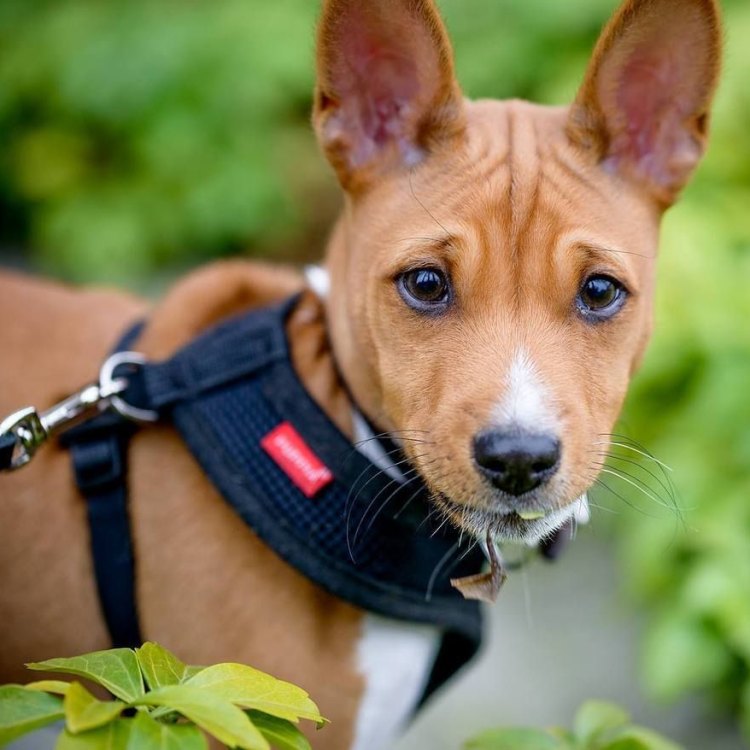
The Basenji Dog: A Fascinating Breed from Africa
Disclaimer: The content provided is for informational purposes only. We cannot guarantee the accuracy of the information on this page 100%. All information provided here may change without prior notice.




